Though nearly 50 years have passed since Louis Kahn’s death, in 1974, you sense the aura of that architectural master when visiting this brooding yet sumptuous new house perched on Madrone Ridge in Sonoma County. What comes to mind isn’t a specific building by Kahn so much as his approach to the rooted art of building, the creed that “Architecture is the thoughtful making of spaces.”
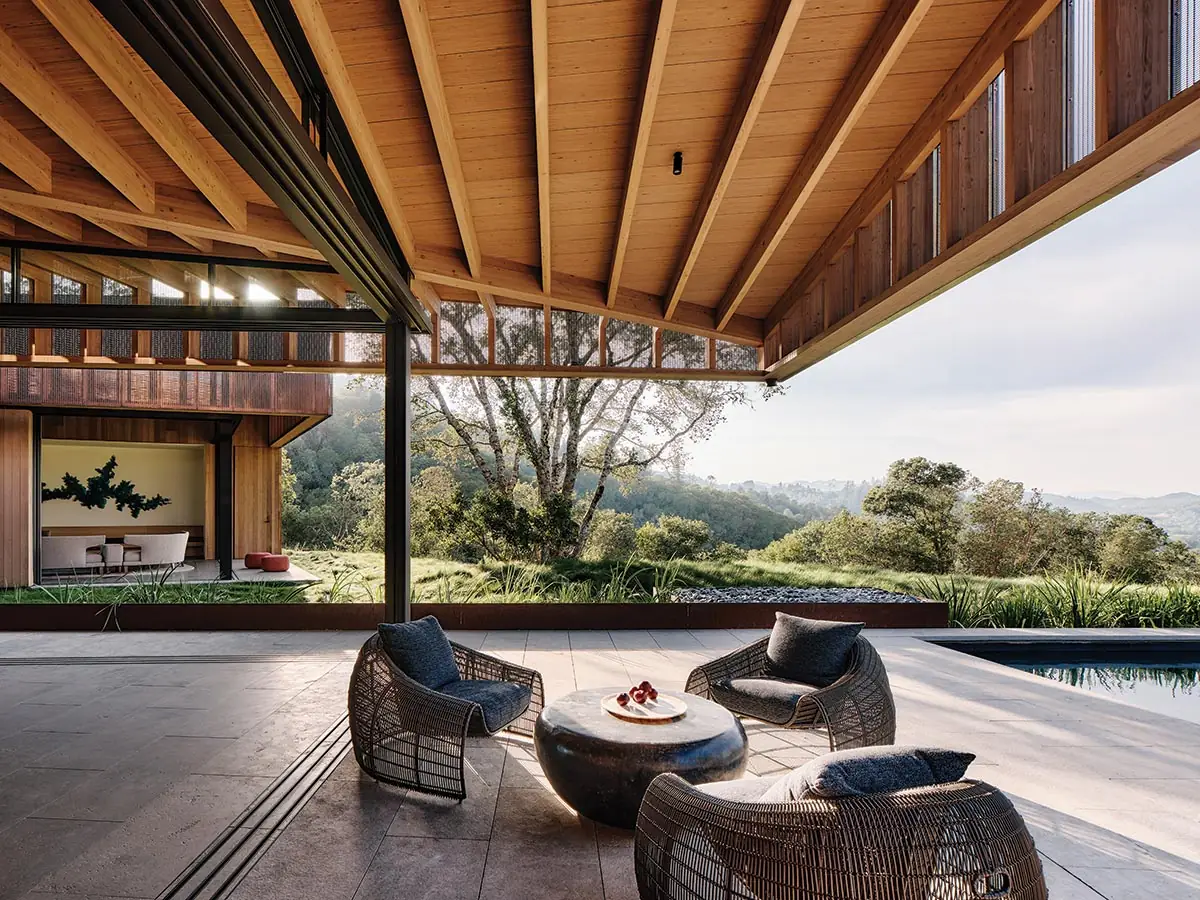
Copper-clad pavilions overlook a valley in Sonoma County. (top of page and above). Photo © Joe Fletcher, click to enlarge.
This isn’t coincidence: the house was designed by Field Architecture, whose founder, Stan Field, studied under Kahn for two years at the University of Pennsylvania in the 1960s. More than anything else, though, the power of the site demanded an equally powerful response.
“This home is sited in wild terrain above a cultivated valley,” said Jess Field, who designed the house with his father. “We tried to coax out the materials and textures and apertures that make it such a rich environment.”
The house, which was built by a young San Francisco couple as a retreat for their family, is organized as three pavilions that fan out and face northeast. Despite the proximity to a nearby valley, home to more than 60 wineries, views from here are defined by the mature trees ringing the site and, in the distance, the forested mountain ridge separating Sonoma from Napa Valley.
The structures are connected by breezeways and clad in copper—solid for the most part, but densely perforated where the roof folds down above beams of Douglas fir, to filter the summer sun. Though the starting point was the need for fire protection in volatile terrain, the result hints of blunt geological forms; Jess Field likens them to the rubbled rocks that lie beneath the surface of the hillside site.
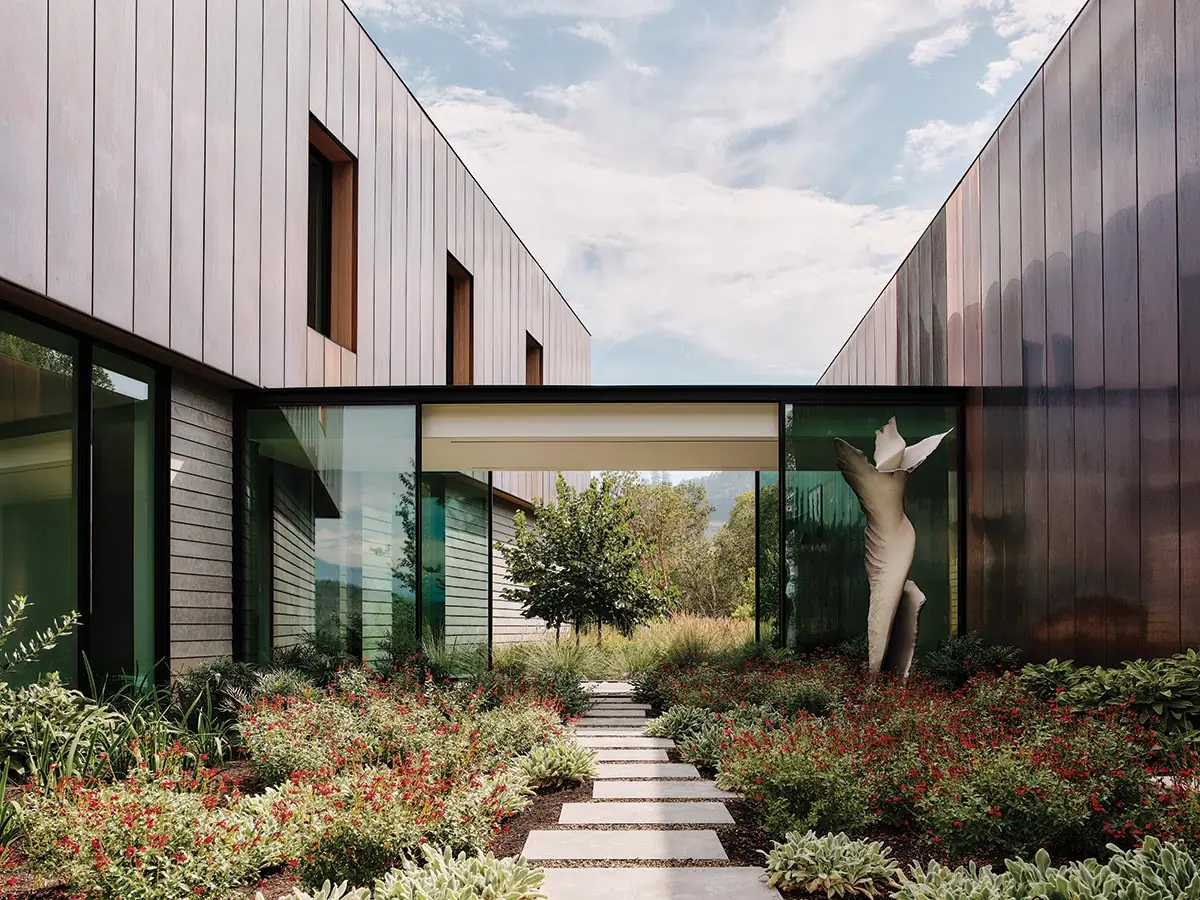
Glass breezeways connect the three pavilions together. Photo © Joe Fletcher
But, inside the pavilions, set amid billowing drought-tolerant shrubs and grasses, heaviness gives way to an experiential intimacy, as if the constructed realm is one with the natural place. On warm days, one can make the lines between inside and out vanish simply by pulling open the sequence of sliding glass doors that constitute the east-facing walls. Similarly, the breezeways linking the pavilions have retractable walls. It’s not a question of blurring the line between inside and out; “inside” all but disappears.
A different aspect of the overlapping layers is showcased in winter, during the rains that are so crucial to the Bay Area wine country’s rarefied agricultural abundance. Each pavilion roof slopes inward to form a shallow V, the two sides channeling rainwater toward a central diagonal gutter. Runoff then cascades into large artful basins filled with river rocks—one at each pavilion, and always at a glassed-in corner, so that the descent is dramatized.
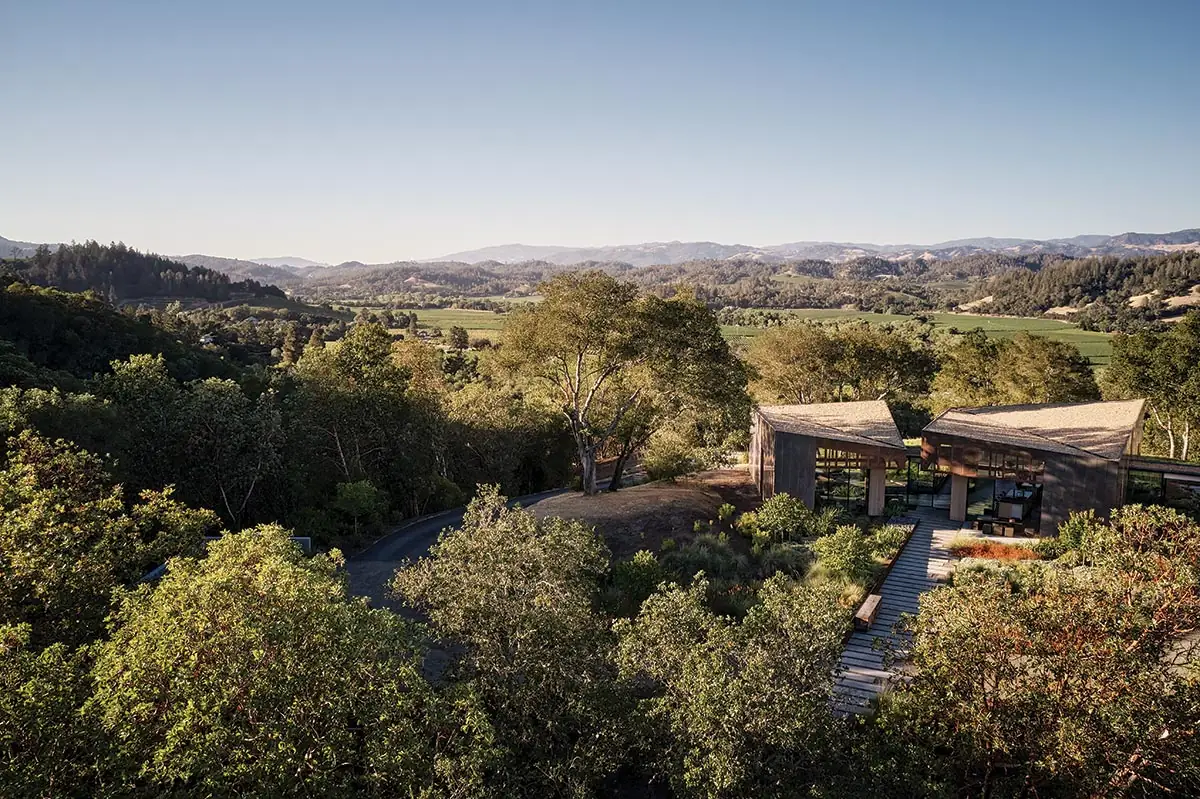
1
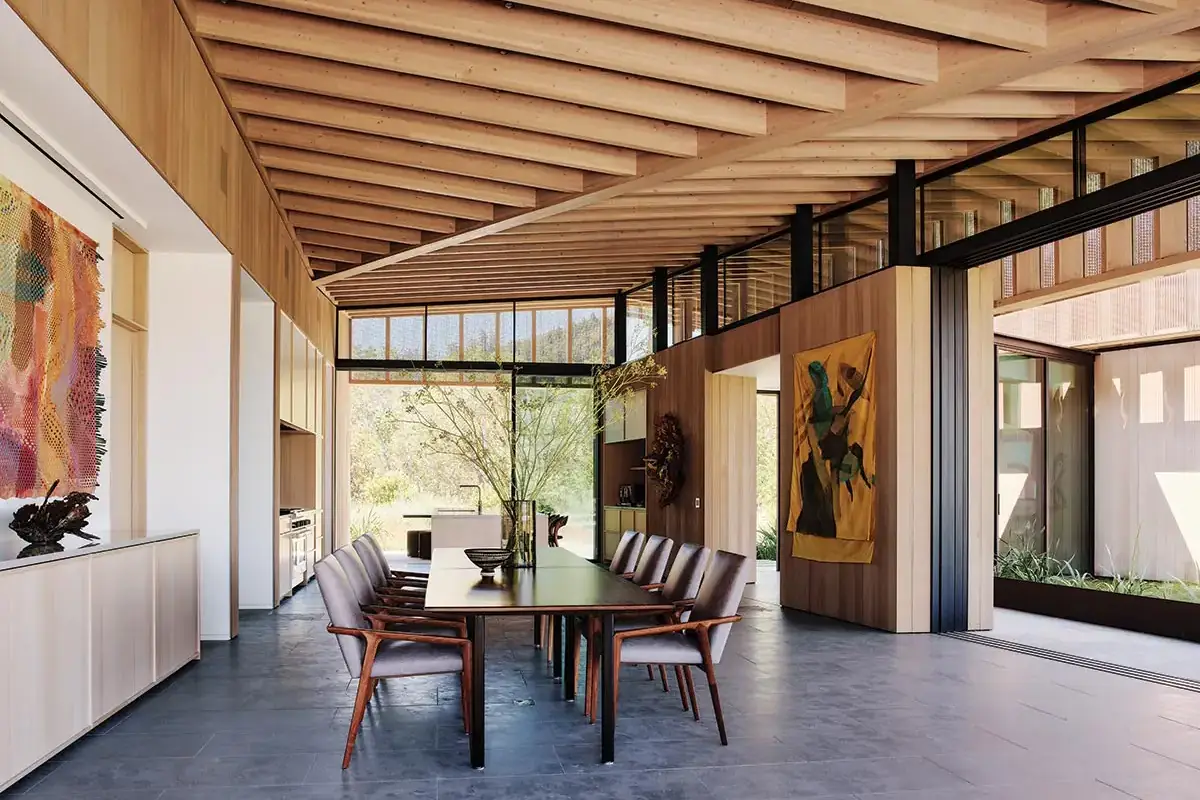
2
Each pavilion roof folds to create a shallow V shape (1) that also registers inside with ceiling beams (2). Photos © Joe Fletcher
Other elements reinforce the connection between built and natural worlds, such as how the pavilion floors are the same limestone as the limestone pavers that lead to the house through Ron Lutsko’s colorful landscape. The copper skin picks up on the red trunks of aged madrones—broadleaf evergreens native to western coastal areas—that dot the site. The window placement in the pavilions was determined, in part, by more prevalent clusters of oaks, which were protected during construction.
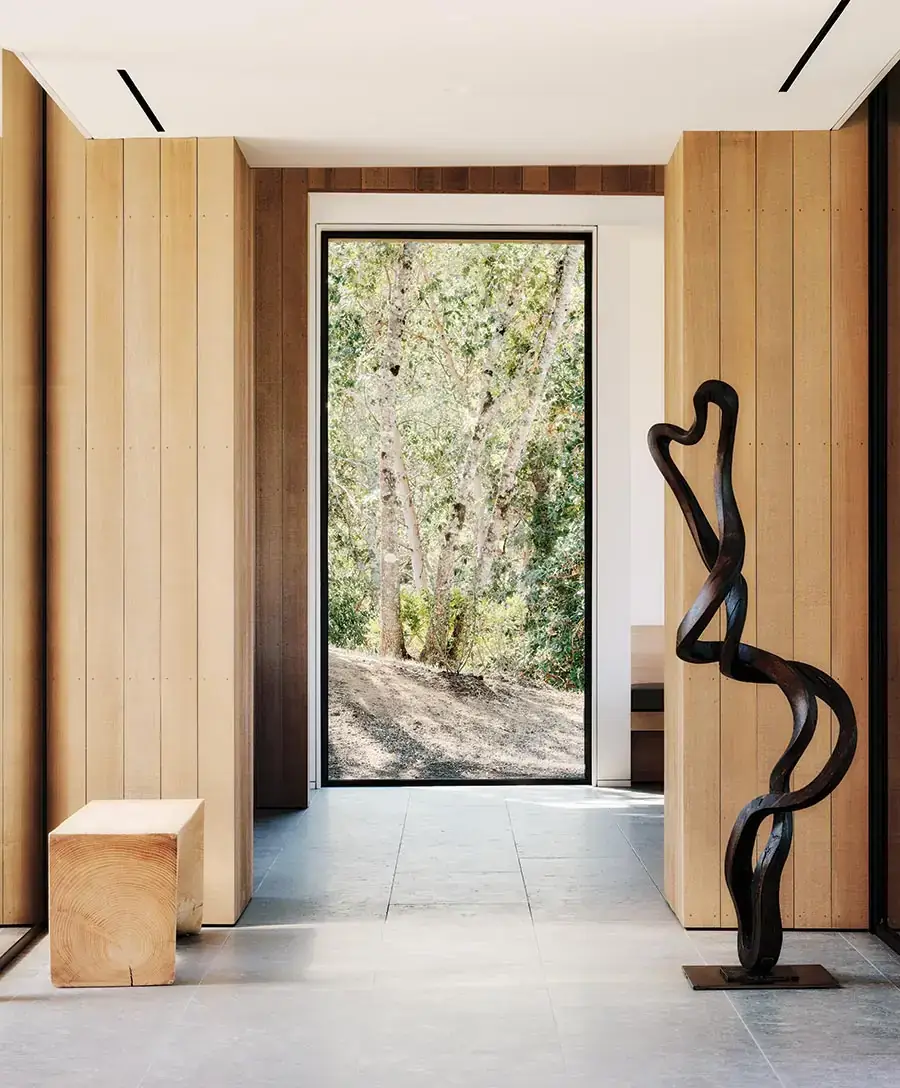
Glazing is largely free of mullions. Photo © Joe Fletcher
Those clusters were virtually all that was left of the natural terrain when the current owners purchased the site; according to Jess Field, including these remnants visually was another reason for the strategy of pavilions connected by glass breezeways: “we wanted to make the buildings seem porous, stitching the landscape through them the best that we could.”
All this adds up to a complex of 4,920 square feet, much of it in the two-story southernmost pavilion that places the family’s private living quarters above a garage, studio, and guest room. But the other two enclosures—one a living space ideal for gatherings, the other an open kitchen that flows into a dining area and covered patio with a pool beyond—feel intimate. Cradled and warm, they’re content to play a background role amid the natural show. Whether the design’s inspiration was the setting or Kahn’s commanding memory, Madrone Ridge is not meant to dazzle. It’s a place within a place, and it feels as if it belongs.
Click plan to enlarge
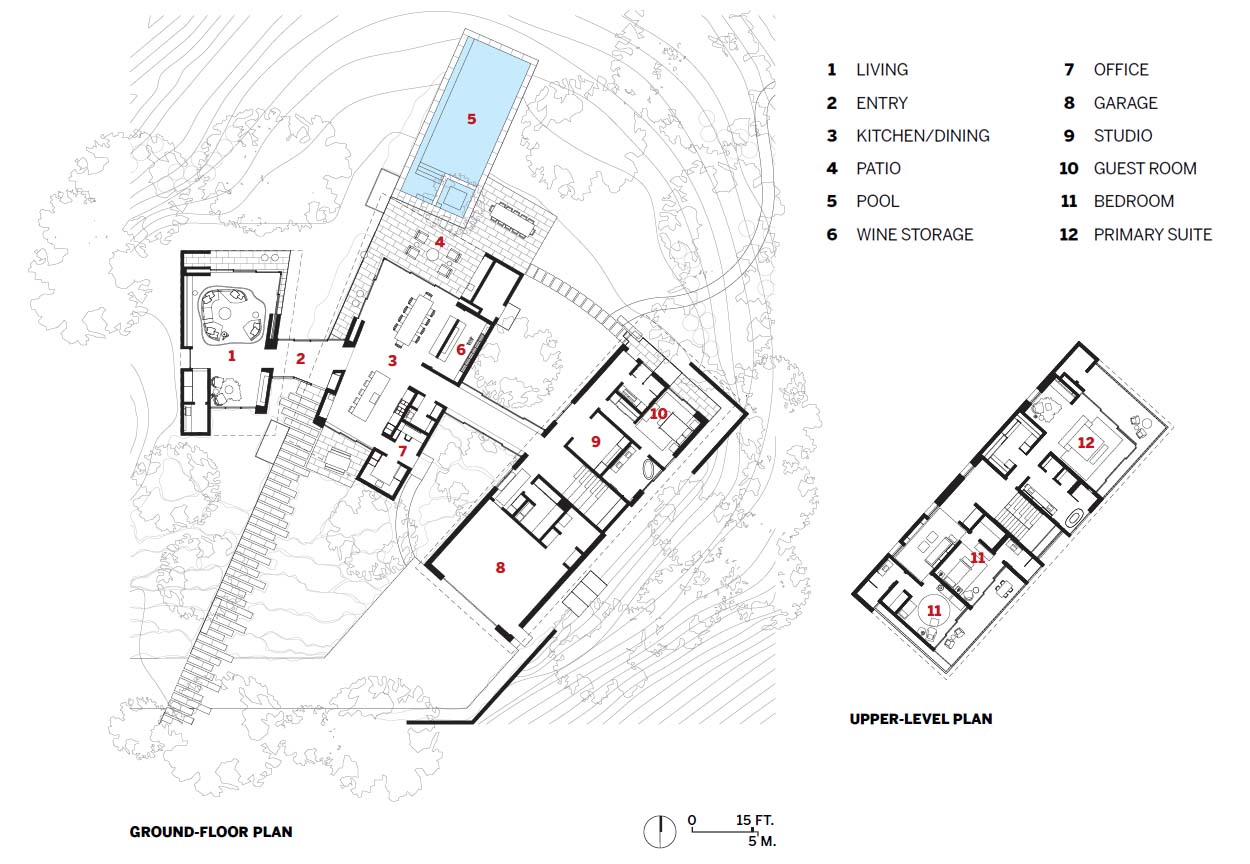
Credits
Architect:
Field Architecture — Jess Field, Stan Field, principals; Daniel Widlowski, Brian Washburn, Mark Jardine, design team
Engineers:
Strandberg (structural); Munselle (civil); Engineering 350 (m/e/p)
Consultants:
Ann Lowengart (interiors); Lutsko Associates (landscape)
General Contractor:
Dowbuilt
Size:
4,920 square feet
Cost:
Withheld
Completion Date:
October 2021
Sources
Exterior Cladding:
Masonry: Limestone
Metal panels: Copper panels, Cor-Ten panels
Vapor barrier: Prosoco
Wood: Western Red Cedar
Roofing:
Soprema Membrane
Windows & Doors:
Blomberg
Paint:
Benjamin Moore
Hardware:
Accurate (locksets); SVB, Omnia (pulls)
Lighting:
Element (ambient); EST (downlights); Kelvix, AION (tasklighting); Bega (exterior); Lutron (controls)
Plumbing:
CEA, Kohler, Grohe, Toto


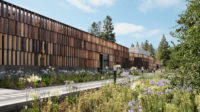
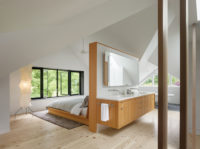
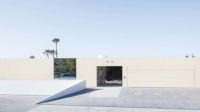
Post a comment to this article
Report Abusive Comment